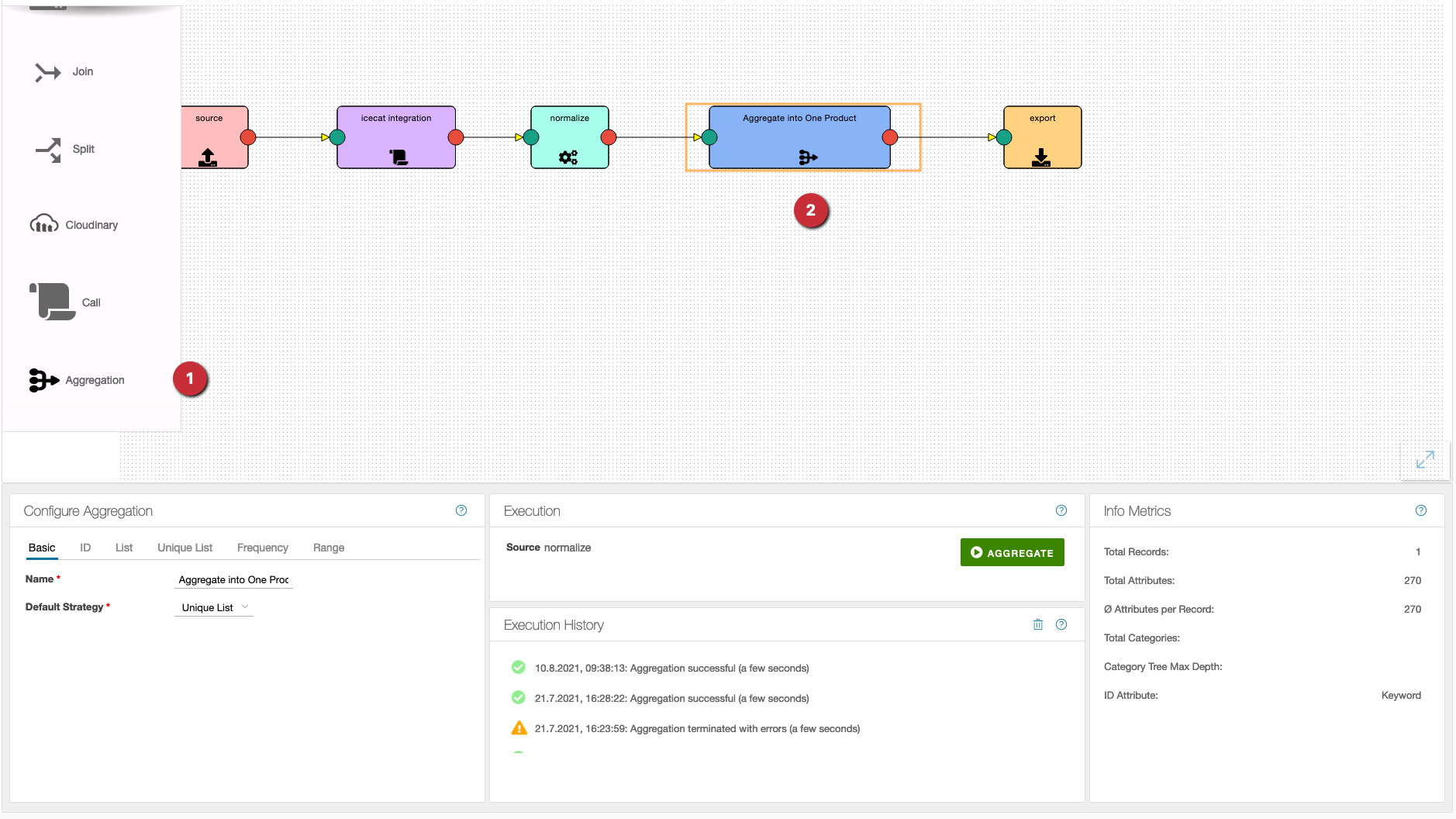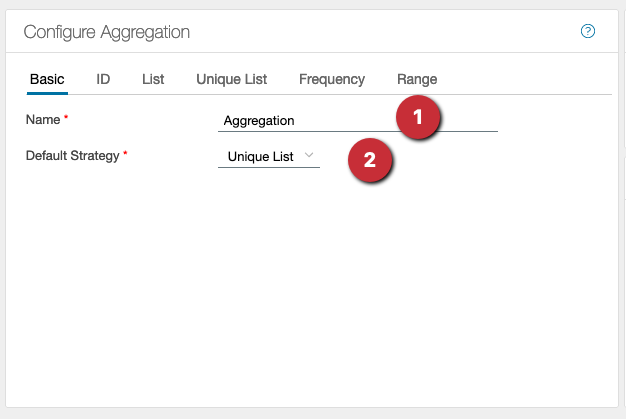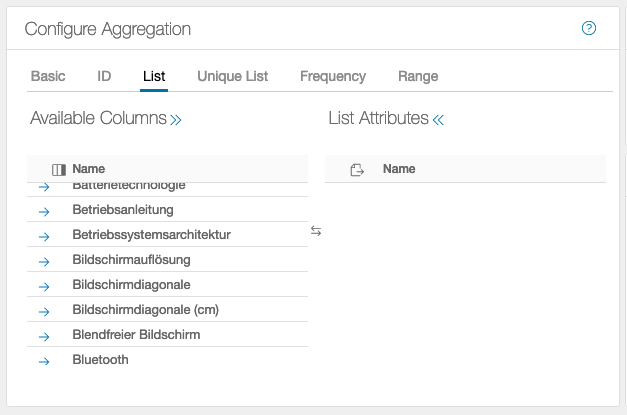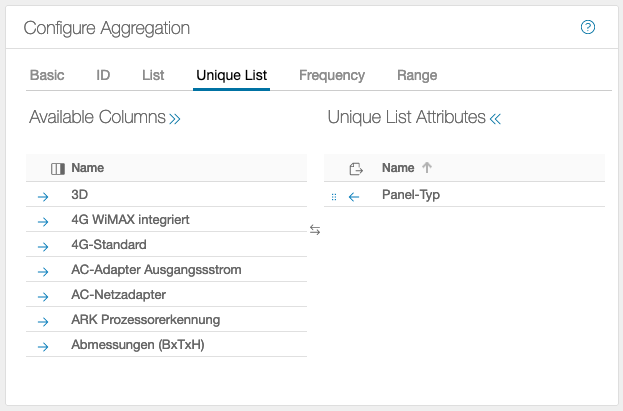In aggregation, data can be summarized in different ways. This aggregation takes place within the table.

- As usual, the operation can be dragged from the left column onto the workspace.
- After that, the aggregation is connected to the desired flow elements.
There are 6 tabs to configure the aggregation:
Basic

- A meaningful name for the aggregation should be assigned
- The following settings are possible for ‘Default Strategy’: ⋅⋅* Lists, here all data are summarized without change ⋅⋅* Unique lists, here the data are taken over once, duplicates are not taken into account ⋅⋅* Frequencies behave like unique lists, additionally the frequency of occurrence is added The settings in this tab apply to the whole operation.
ID

This declares an attribute to be an ID. There must be at least one ID attribute.
List

The data is summarized without change.
Unique List

Here the data is taken over once, and duplicates are not taken into account. To determine the number of duplicates, the Frequencies tab is used.
Frequency

In the example, the frequencies of the attributes RAM, 4G and type are returned, i.e. the data is accepted once, and the frequency is incremented for a further occurrence.
Range

In this example, the Height column is evaluated. The minimum and maximum heights are returned as the result. The Ranges tab can only be used on numeric data, all other values will result in an error.